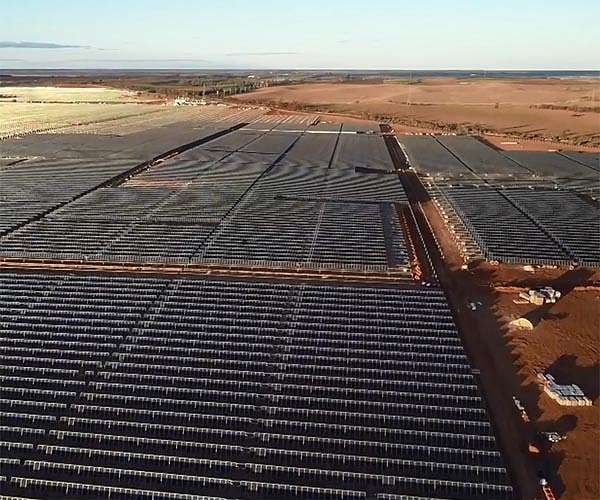Australia gives the green light for the world’s largest solar hub
Australia on Wednesday approved plans for a major solar and battery farm that would export energy to Singapore, a project billed as the “world’s largest solar area.”
Authorities have announced environmental approvals for SunCable’s $24 billion project in Australia’s remote north, which is expected to power three million homes.
The project, which includes a series of panels, batteries and ultimately a cable connecting Australia to Singapore, is backed by technology billionaire and green activist Mike Cannon-Brookes.
“It will be the largest solar area in the world – and heralds Australia as the world leader in green energy,” said Environment Minister Tanya Plibersek.
It is hoped that energy production will begin in 2030, providing four gigawatts of energy for domestic use.
Another two gigawatts would be sent to Singapore via submarine cable, meeting about 15 percent of the city-state’s needs.
SunCable Australia managing director Cameron Garnsworthy said the approval was “a milestone in the project’s journey”.
Despite Wednesday’s green light, numerous approval processes and other hurdles remain.
The project is subject to approval from the Singapore Energy Market Authority, the Indonesian government and Australian Indigenous communities.
Singapore’s Energy Market Authority said in a statement that it was “in discussions with Sun Cable regarding its proposal to import electricity into Singapore”, but gave no further details.
Garnsworthy said: “SunCable will now focus its efforts on the next phase of planning to advance the project towards a final investment decision, targeted by 2027.”
– ‘Clean energy power station’ –
Countries around the world are rushing to bring major solar projects online to ease the transition away from polluting fossil fuels.
China is leading the way, building almost twice as much wind and solar energy capacity as every other country combined.
It brought the 3.5 gigawatt Midong solar farm online this year, its largest facility to date.
Australia, on the other hand, remains one of the world’s largest exporters of coal and gas, despite being ravaged by the effects of climate change, from intense heat to floods and bushfires.
And while Australians are among the most enthusiastic users of household solar panels in the world, a range of governments are reluctant to embrace renewable energy sources.
Renewables made up 32 percent of Australia’s total electricity generation in 2022, compared to coal, which contributed 47 percent, according to the latest government data.
Plibersek praised the project as a way to meet Australia’s projected energy shortfall and create “14,300 new jobs in northern Australia”.
Ken Baldwin, director of the Australian National University’s Energy Change Institute, said the project was a “world first” for the export of renewable electricity from solar and wind energy on such a scale.
“Australia has some of the best solar and wind energy resources of any country and as a result is installing solar and wind power at some of the fastest rates of any country in the world, per capita,” he told AFP.
This momentum must continue, Baldwin said, especially if Australia is to meet its net zero targets by 2050.
“Australia has invested heavily in solar and wind energy over the past five years, but it must double or triple those investments to achieve its climate trajectory towards a net zero future by 2050.”
He said Australia will need about 100 gigawatts of solar and wind capacity by 2030. The SunCable project will only meet four gigawatts of that need.
Climate Council CEO Amanda McKenzie said the new solar hub was a bold step towards making Australia a “clean energy powerhouse” and such projects were essential to “delivering affordable energy and reducing climate pollution” .
“With the closure of coal-fired power stations on the horizon, Australia must accelerate the rollout of solar and storage at every level: rooftops, large-scale projects and everything in between,” she said.
The project would also be an important step for Cannon-Brookes, who once described the project as “insane” before becoming an enthusiastic investor.


